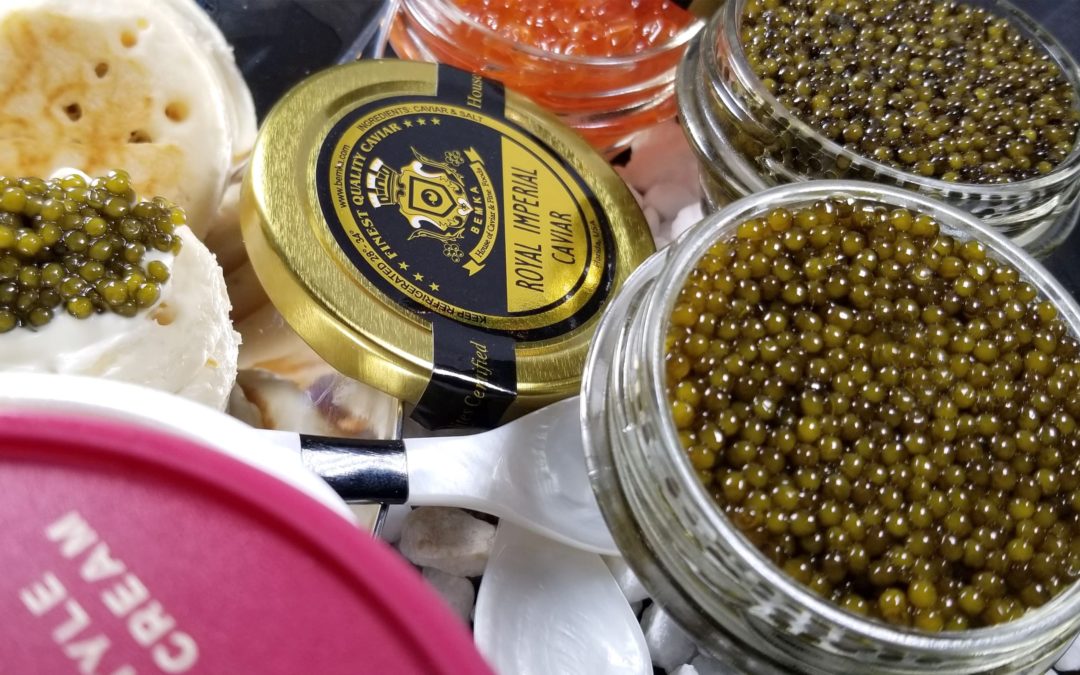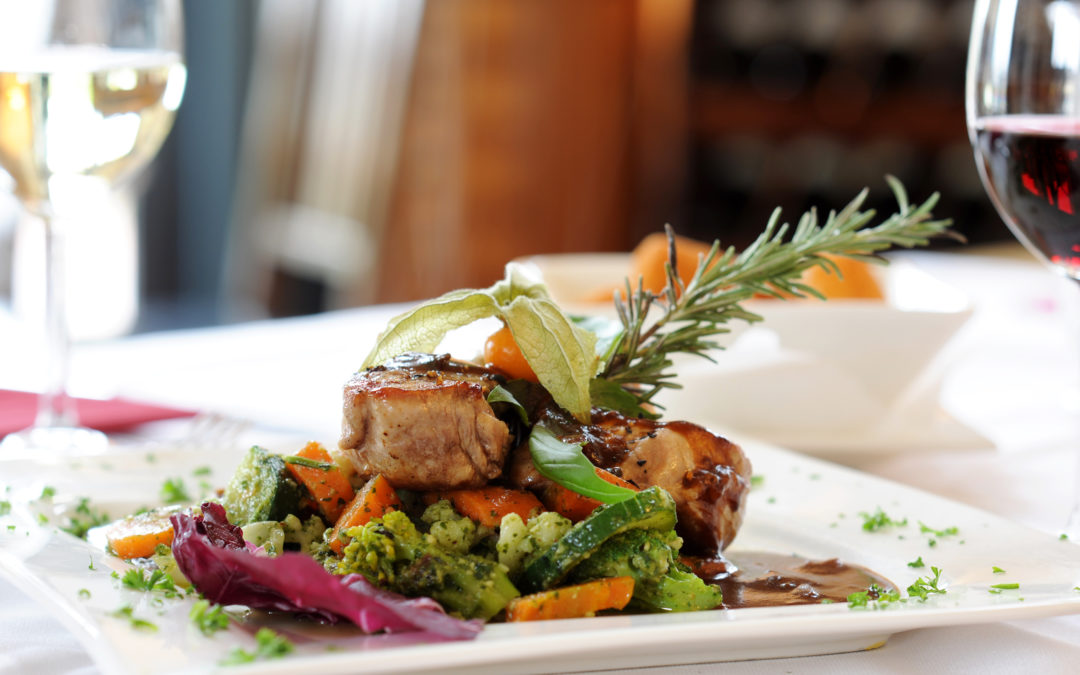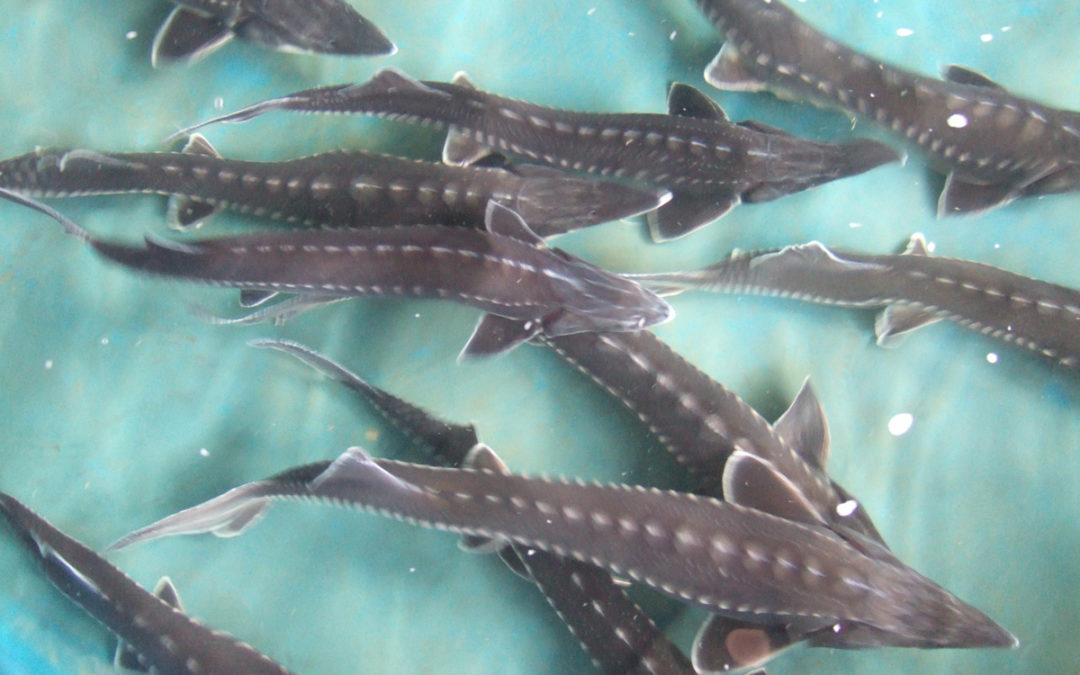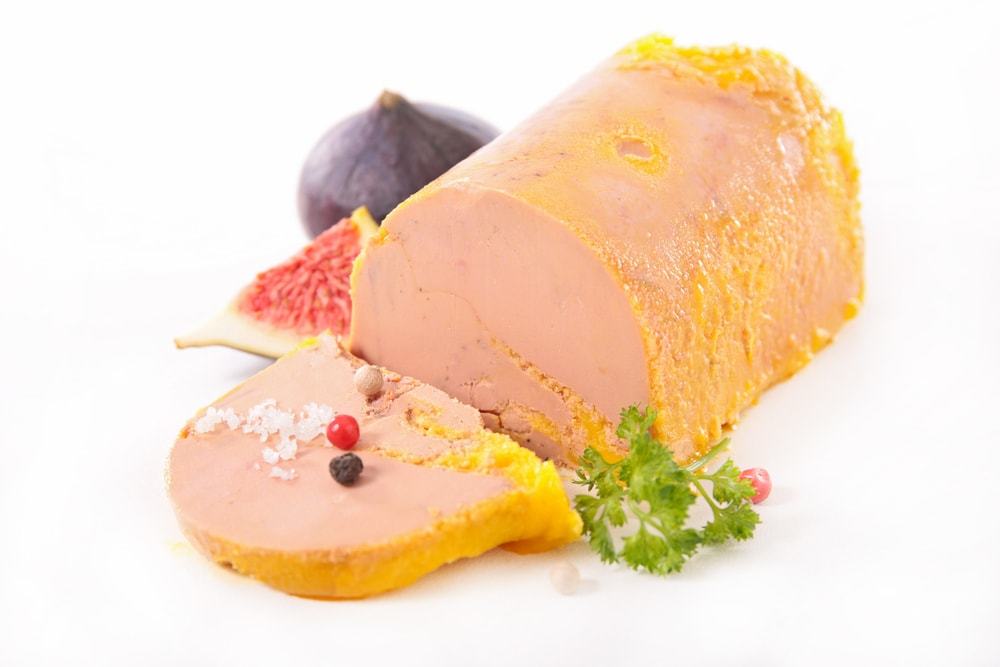
by HOCAFF Team | Sep 9, 2020 | General
Have you heard of many caviar types, and you don’t know which one to choose for a meal or special occasion? If you read this blog post, we guarantee that you will know which one to try and which dishes to include it in after this.
How to choose caviar? We know you’ve come this far to find out. This delicious delicacy should be selected according to the size of the grains, color, texture, and flavor.Each species develops its characteristics. Each species of caviar follows a maturation and a selection that gives it a unique aroma. That is why each caviar box is unique, just as we know that the opportunity to try it does not come every day. This blog post will talk about some caviar types and what dishes to include it in.

The first type of caviar we want to talk to you about is Paddlefish caviar. This caviar has medium-sized grains with dark to light gray eggs. It is derived from the Polyodon Spathula fish, which is not a species of sturgeon.
The paddlefish is considered a Caspian Sevruga cousin, as it is comparable in taste, color, and size to that of the Caspian Sevruga caviar. Paddlefish are very popular with chefs and Epicureans. It is usually served on canapes or blinis with fresh cream, or even as a garnish.
If you want to include this delicacy in a canape for an impressive entry, we will tell you how:
We can present the caviar on a crunchy whole-wheat toast or puff pastry spread with butter or Crème fraîche to emphasize simplicity and give importance to the caviar. We can opt for more elaborate variations accompanying the caviar with salmon or smoked cod, avocado, hummus, prawns, or crab mince.
Now let’s continue with tobiko black caviar; what is this? This colorful little caviar comes from flying fish roe. You’ll usually find it festively decorating your sushi, maki and nigiri. Although the right color of tobiko caviar is bright orange, this black Tobiko has been naturally dyed with squid ink to give it a spectacular appearance. Use it to roll authentic sushi at home or to decorate appetizers and hors d’oeuvres.
You can use the Tobiko to taste fabulous meals at home for special occasions, such as homemade sushi or a creamy omelet.

Suppose you are going to prepare the tortilla with Tobiko. In that case, we want to tell you that it is a beautiful and delicious recipe for you to offer to your friends. The formula is an omelet, with onion, fish roe, and sauce and seasonings – ideal for an excellent breakfast!

To finish, we want to tell you about caviar that you should undoubtedly choose for any special event, Royal Imperial Kaluga. This golden caviar, of the Acipenser Dauricus and Acipenser Schrenckii species, is raised on a farm on China’s Qiandao Lake. Our Royal Imperial, with its giant eggs, is light brown to golden in color and has a firm texture with a creamy, buttery finish. What are you waiting to try?
We give you a tip before we leave so that you can prepare an exquisite dish for that brunch you want so much:

Any meat will serve to include caviar on the plate. We can use red or white meat, although, with this accompaniment, we recommend opting for the first option: beef, pork, veal, ox.Once we have chosen the dish’s base raw material, we only have to cook a sauce or side consisting of caviar to complete the recipe. Any ideas:
1 .beef chop with red fruit sauce and caviar
With the cutlet cooked on the grill traditionally, we create a sweet accompaniment with red fruit sauce and caviar roe placed on top.
2.Pork tenderloin stuffed with boletus and caviar
Before cooking the sirloin, it is filled with boletus, caviar or any other product that we want to include in the recipe. Once it is ready, it is closed and rolled so that it is well attached with a kitchen string. Ready, baked, and at the table.
We hope that everything we tell you in this blog helps you know what type of caviar to choose for a special occasion and what sumptuous dishes you can prepare from home or order in a restaurant.
If you want to know more about the world of caviar, we invite you to visit our House of Caviar page; we believe that you will love everything we have there for you.

by HOCAFF Team | Aug 21, 2020 | General
Many connoisseurs of food will do whatever it takes to get their hands on the most exotic, delicious, and extravagant dishes, even if it means paying a small fortune. Some of the most luxurious meals are divine creations of the best chefs. Other foods are on the list only because of their rarity and demand. In this blog post, you will know five fine foods that you should try at some point in your life.

1.Of course, let’s start talking about caviar, our preference. Beluga Caviar is one of the finest dishes in the world, costing up to $5,000 per kilogram. Caviar is fish roe (eggs), and this particular brand comes from the Beluga Sturgeon, found mostly in the Caspian sea. It can take up to 20 years for a Beluga Sturgeon to reach its maximum size, and it can weigh up to 2 tonnes. The eggs are the largest of the fish eggs used for caviar. Beluga usually ranges from purple to black, the palest being the most expensive. Beluga caviar is generally served on its own on small pieces of toast as it needs no additions of flavor to improve it. If you have not experienced eating caviar when you bite down, each egg pops and releases a slightly salty-fishy flavor.

2.Another delicacy that you should try is the duck meat. There is a variety of meats that this animal can provide and give an elegant dish to your palate — for example, the Confit, which is the duck legs, this meat is fibrous. It is simmered by moistening it with the duck’s fat, which is bought separately and gives it a smoother texture. The Confit can be purchased canned or prepared at home, marinated very well with potatoes and garlic, with applesauce and figs, and with fruit sauces (also with jams). It is a fat and caloric preparation that contains sugars, so it should be consumed in moderation.
Other parts of the duck that you should prepare or order in some luxury restaurants are duck salami, fresh duck legs, duck sausages. If you eat some dishes with this meat, you will not regret it.

3.Now talk about Spanish meat. Iberico Ham is a type of cured ham produced in Spain and Portugal, the most excellent Iberico ham is from free-range pigs that have a diet of only acorns during the last period of their life.The classification of Iberico ham is rigorous. It has ‘black label’ ham considered to be the very best – produced from pure-bred Iberian pigs, roaming oak forests and feasting on acorns. On top of that, the ham is cured for a long 36 months! According to the Guinness World Records, the most expensive leg of ham commercially available is an Iberian ‘Manchado de Jabugo’, retailing at a whopping £3,192.76 (as of 20 March 2016).Although the pigs are reared for just three years, the ham legs are cured for up to six!

4.Another gourmet meat that should try is the Grass-Fed Beef Tenderloin. Loaded with that intense, rich flavor that only pure, 100% grass-fed beef can deliver, Sourced from cattle reared on grasses in the rugged, pristine wilderness, this is healthy cattle that are humanely and sustainably raised.
A long, narrow muscle from high up inside the beef loin, this is the most tender cut of them all, and perfect for all sorts of recipes – roast or grill it whole, served cut against the grain, or cut into individual steaks to sear or grill. This lean cut benefits from high-heat quick cooking to medium-rare – any more will be overkill. For the finest dishes, roast this beef tenderloin steak with bacon wrapped around it. You will melt from the flavor.

5.Finally, we want to tell you about a spice that is undoubtedly unique in the world of cooking. Saffron is easily the most expensive spice in the world. Harvesting Saffron is very particular — each strand must be handpicked, and it takes thousands to supply an ounce. There are many uses for Saffron from flavoring delicate dishes to coloring vibrant foods. Top chefs around the world love getting their hands on this spice to give their meals extra character.
If your rice is luminous yellow, then the chances are to share a saucepan with Saffron. The spice, nicknamed ‘Red Gold,’ is the vivid crimson stigma (or threads) from a crocus flower, and it’s used as a coloring agent in food. Why does something so small cost so much? It is a weight for weight, more expensive than gold itself. The reasons are simple: Saffron crocuses only flower for a week or two a year in the autumn; harvesting the spice is labor-intensive (it’s collected and processed by hand).
Each small flower has only three stigmas, which means it takes around two football pitches of crocuses to create a kilogram of Saffron. That’s as many as 300,000 flowers!
Would you dare to try it and give your meals a luxurious touch?
Now that you know the five best dishes you should try in life, what is the next step? Of course, it is to try them. At House of caviar, we have some of these dishes that you should try.

by HOCAFF Team | Mar 29, 2018 | General
We personally investigate our sources in tandem with the Marine Stewardship Council and the Conference on Trade in Endangered Species to certify our sources and the chain of custody.
Today there are 20 countries producing “farm raised” caviar. Bemka House of Caviar and Fine Foods has sourced and tested production from over 80% of these countries.
By offering an alternative to the caviar harvested from wild Sturgeon and indoor chemically treated international farms, we can alleviate the demand for imported caviars thereby ensuring an abundant and consistent supply of caviar from around the world for generations to come. Equally important for us, and for the survival of wild Sturgeon, is to educate our consumers on the importance of choosing sustainable caviar.
We are already seeing how top chefs and gourmet aficionados are switching their loyalty from Caspian caviar to California farmed Sturgeon caviar, thus embracing and supporting this crucial movement. The more successful we are in educating our consumers, the more we can help change the paradigm for how America’s professional and amateur chefs perceive and eat caviar.

by HOCAFF Team | Oct 24, 2017 | General
Each original tin holds the eggs of an individual sturgeon. Caviar should never be “blended” or mixed with different fish. With the advent of aquaculture, a harvesting group of caviar-bearing sturgeon is almost always of the same age, size, & stock. They are also raised in the same conditions (water quality, temperature, etc.) and on the same diet. Biology, of course, can still play a part and make a unique “batch” per individual fish. Part of the initial grading process is to evaluate the quality and consistency of the original delivery. Rich will factor into account the size of the caviar grains (medium to large size) along with the color of the eggs, from light to dark.
By sampling the product, we are evaluating multiple factors – foremost the richness of flavor. Caviar – especially that of the Osetra sturgeon – should have a fresh, almost nutty flavor – and should be briny without being powerfully salty (“malossol” – Russian for “little salt” – is a common term used and is often on the caviar label itself.) The pleasing flavor needs to be equally offset by a firmness of egg texture – or the “pop” on the roof of the mouth – that is a traditional benchmark of superior caviar. Finally, the finish is evaluated on the palate – it should be creamy and flavorful, not bitter or “fishy.” All these factors play into the assessment of the quality grade assigned to the caviar.

by HOCAFF Team | Oct 24, 2017 | General
If you love the decadently rich taste of foie gras but thought it was too complicated to serve at home, you are in for a wonderful surprise. Many gourmet aficionados make the mistake of thinking the only way they can incorporate this gastronomic delight at home is as foie gras pate. Actually, foie gras is surprisingly simple to serve whether it is in its whole lobe form or prepared as a terrine or pate. Once you know how to serve foie gras, you can easily feature it as a centerpiece at all your finest gatherings. Don´t be surprised to find yourself reaching for foie gras as your favorite flavor, using it to transform everyday meals into gourmet concoctions and as a stand-alone treasure anytime you have a craving for something delicious.
Moulard duck foie gras is recommended for the richest, most refined flavor. If you are starting with fresh or frozen foie gras lobes, they need to be cooked before they can be served. Foie gras lobes store exceptionally well in the freezer, and are available in cubes, slices, or whole lobes. If using frozen foie gras, defrost in the refrigerator before preparing. Starting with foie gras lobes that are at a slightly chilled temperature, slice into portions that are approximately half an inch thick.
The high fat content of foie gras can cause it to tear or crumble when cut with a room temperature knife, so be sure to use a non-serrated blade and run it under hot water between each cut. Lightly salt and pepper slices, then sear in a hot skillet for around 30 seconds on each side, just long enough for the foie gras to develop a light brown crust.
- How to serve whole lobe foie gras
Because foie gras is so superbly rich, it should be served in portions that are no larger than a single slice. Typical foie gras accompaniments include dried fruits or nuts, or simple sauces such as honey or fig chutney. Fruity and acidic flavors enhance the rich, nutty taste of foie gras to create a harmonious whole. Arrange your foie gras slices on toasted brioche rounds, or plate the slices and drizzle with a simple sweet-and-sour sauce, such as an Asian plum sauce or cranberry sauce.
- Serving foie gras pate and terrine
When serving prepared foie gras pates or terrines, you can just slice portions directly from the mold. Ready-made foie gras has the best flavor when served slightly chilled or at room temperature. Fold slices onto toast points or country bread. Foie gras goes well with honey and fruit preserves, or you can simply serve on the toast slices. Accompany with lightly perfumed, sweet wines such as Sauternes and sweeter Rieslings.
- Where to obtain foie gras
Many grocery stores and gourmet shops only carry “shelf-stable” foie gras that had been preserved in jars or tins. Buying foie gras from the House of Caviar & Fine Foods online store allows amateur chefs and aspiring foodies to enjoy fresh, frozen, and ready-made foie gras that is flavorful and of the highest quality. For more than thirty years, we have been the online source that discerning epicureans rely on for the freshest selected caviar and foie gras, as well as specialty meats, seafood, truffles, and other gourmet foods from all over the world. Follow House of Caviar and Fine foods online on our Facebook page for more foie gras serving suggestions, gourmet recipes, and more.














